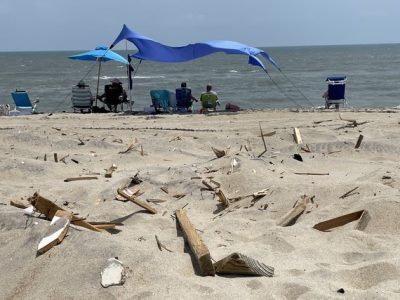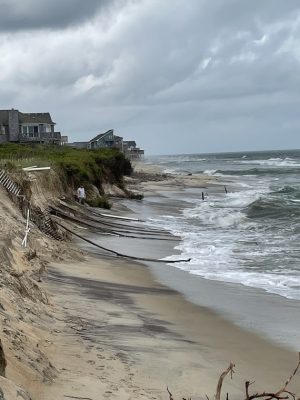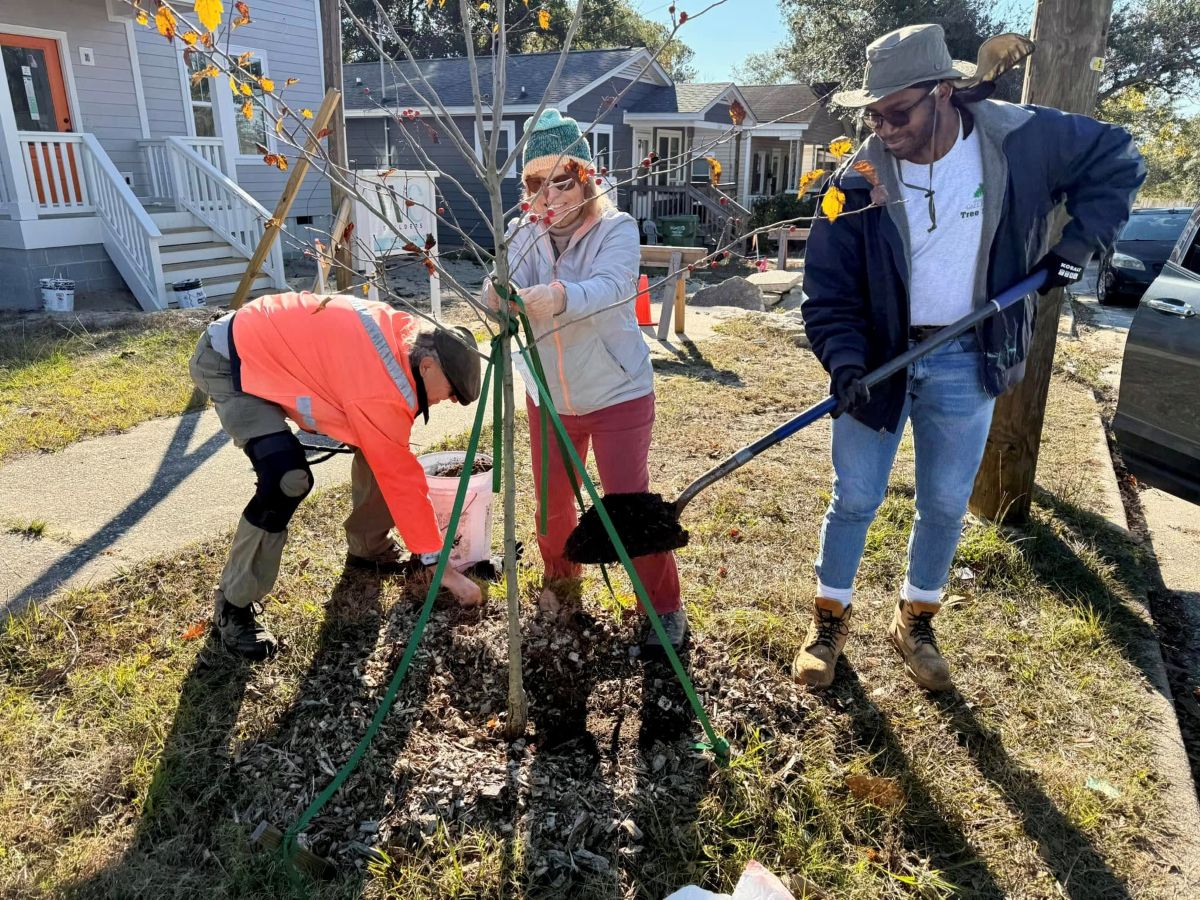
Swimming season is here and officials with various agencies are citing safety concerns about ocean debris and unsafe water quality conditions and stressing the importance of being extra careful around the water.
Beachgoers enjoying the surf between Rodanthe and Salvo are urged to use extreme caution and wear hard-soled shoes to avoid injury from both sand-covered and fully exposed debris from the two homes that collapsed into the ocean earlier this month.
Supporter Spotlight
The two oceanfront homes fell May 10 following a coastal storm that brought extreme high tides. The surf that swallowed the houses promptly spread debris around for miles.

“While much of the large debris has been removed by a variety of beach cleanup efforts, miles of small pieces of debris remains on and under the surface of the beach,” Cape Hatteras National Seashore officials said in a statement Wednesday. “The Seashore is aware of the presence of wood with exposed nails, splintered wooden fragments and other debris that could be harmful to beachgoers without hard-soled footwear.”
The officials added that erosion at the Buxton Beach Access had exposed PVC pipes and other previously underground items associated with decommissioned military facilities that were not removed. Work to remove the debris had begun, officials said.
“Anyone planning to enter the ocean should first check the daily rip current forecast. Most of the concerning debris that we continue to find is located on and under the surface of the beach, but being cautious in the ocean is not a bad idea,” said Michael Barber, public affairs officer with Cape Hatteras National Seashore.
Healthy, Safe Swimming Week
Though a large swath of beach being covered by remnants of two houses is not typically a threat to beachgoers, other risks that could cause illness and injury are always present while enjoying water-related activities.
Supporter Spotlight
The Centers for Disease Control and Prevention has an outreach campaign, Healthy and Safe Swimming Week, Monday, May 23, through Sunday, May 29, to promote safety.
As part of Healthy and Safe Swimming Week, the North Carolina Department of Health and Human Services has provided simple steps to protect the public, such as precautions to prevent drowning, the leading preventable cause of death for children.
“Drowning deaths are tragic and preventable,” said Dr. Susan Kansagra, senior deputy director of the state Division of Public Health in a statement. “Now is the time to take simple steps to prevent drownings and stay safe and healthy wherever you and your family or friends gather for water recreation activities.”
Designate one responsible adult for every five children in the water, keep pools secure by closing and locking gates or doors every time they are used and remove or lock ladders when aboveground pools are not in use.
Also, the CDC recommends knowing the risks of natural waters to prevent drowning. Lakes, rivers, and oceans have hidden hazards such as dangerous currents or waves, rocks or vegetation, and limited visibility.
Bacterial contamination
Officials also advise that all swimming pools, spas, lakes, rivers or oceans are potential sources of water-related illness.
Recreational water illnesses typically affect a person’s stomach and intestines, skin or respiratory system. The most common symptoms are diarrhea, skin rashes, ear pain, cough or congestion and eye pain. Swallowing just a mouthful of water that contains diarrhea-causing germs can make you sick.
The extreme high tides that led to the collapsed houses also prompted state recreational water quality officials May 11 to advise that ocean waters along parts of the Cape Hatteras National Seashore could be polluted from septic system failures. The state followed up May 16 to explain that bacteria levels had met state and federal standards for swimming and water play.
Technicians with the North Carolina State Department of Environmental Quality Recreational Water Quality Program sample 215 sites throughout the coastal region, usually on a weekly basis from April to October.
Results are posted on the online coastal swimming advisory map. The map shows where waters have enterococcus bacteria, an indicator organism found in the intestines of warm-blooded animals. While enterococcus alone will not cause illness, its presence is correlated with that of organisms that can cause illness.
A swimming advisory means that enterococci levels have exceeded Environmental Protection Agency Standards for two consecutive tests or that enterococci levels of five samples collected within 30 days exceeds EPA standards.

Algal blooms, amoeba
A green or greenish-blue slime or tint to the water may indicate an algal bloom, which are more likely as water temperatures rise. And while algae aren’t necessarily dangerous — most are beneficial — overgrowths of algae in the water can cause illness and a select few can be harmful.
State health officials suggest keeping children and pets away from waters that appear discolored or scummy and not using that water for cleaning or irrigation. Additionally, do not handle or touch large accumulations of algae, also called “scums” or “mats.” If you accidently come into contact with an algal bloom, wash thoroughly.
A more serious water illness comes from primary amoebic meningoencephalitis, or PAM. Also called amoebic meningitis, this rare but serious disease leads to inflammation of the brain, which can cause death. It’s caused by the Naegleria fowleri amoeba, a single-cell organism that often grows in warm, untreated, stagnant water such as lakes, rivers or poorly maintained swimming pools.
PAM infection can happen if water containing the Naegleria fowleri amoeba travels up the nose via activities such as jumping, diving or falling into the water. The amoeba can then make their way to the brain, causing inflammation and destroying brain tissue.
You cannot get PAM from swallowing infected water. officials recommend limiting the amount of water going up your nose, and avoiding activities in warm freshwater when temperatures are high and water levels are low.







